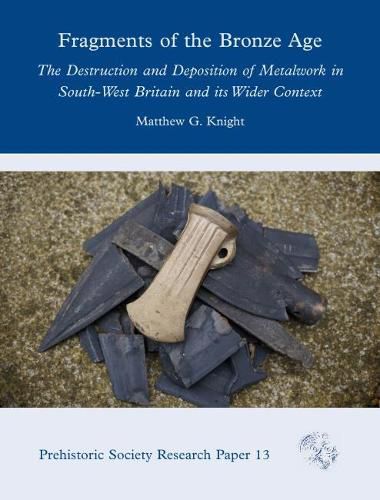Readings Newsletter
Become a Readings Member to make your shopping experience even easier.
Sign in or sign up for free!
You’re not far away from qualifying for FREE standard shipping within Australia
You’ve qualified for FREE standard shipping within Australia
The cart is loading…






The destruction and deposition of metalwork is a widely recognised phenomenon across Bronze Age Europe. Weapons were decommissioned and thrown into rivers; axes were fragmented and piled in hoards; and ornaments were crushed, contorted and placed in certain landscapes. Interpretation of this material is often considered in terms of whether such acts should be considered ritual offerings, or functional acts for storing, scrapping and recycling the metal. This book approaches this debate from a fresh perspective, by focusing on how the metalwork was destroyed and deposited as a means to understand the reasons behind the process.
To achieve this, this study draws on experimental archaeology, as well as developing a framework for assessing what can be considered deliberate destruction. Understanding these processes not only helps us to recognise how destruction happened, but also gives us insights into the individuals involved in these practices. Through an examination of metalwork from south-west Britain, it is possible to observe the complexities involved at a localised level in the acts of destruction and deposition, as well as how they were linked to people and places. This case study is used to consider the social role of destruction and deposition more broadly in the Bronze Age, highlighting how it transformed over time and space.
$9.00 standard shipping within Australia
FREE standard shipping within Australia for orders over $100.00
Express & International shipping calculated at checkout
The destruction and deposition of metalwork is a widely recognised phenomenon across Bronze Age Europe. Weapons were decommissioned and thrown into rivers; axes were fragmented and piled in hoards; and ornaments were crushed, contorted and placed in certain landscapes. Interpretation of this material is often considered in terms of whether such acts should be considered ritual offerings, or functional acts for storing, scrapping and recycling the metal. This book approaches this debate from a fresh perspective, by focusing on how the metalwork was destroyed and deposited as a means to understand the reasons behind the process.
To achieve this, this study draws on experimental archaeology, as well as developing a framework for assessing what can be considered deliberate destruction. Understanding these processes not only helps us to recognise how destruction happened, but also gives us insights into the individuals involved in these practices. Through an examination of metalwork from south-west Britain, it is possible to observe the complexities involved at a localised level in the acts of destruction and deposition, as well as how they were linked to people and places. This case study is used to consider the social role of destruction and deposition more broadly in the Bronze Age, highlighting how it transformed over time and space.